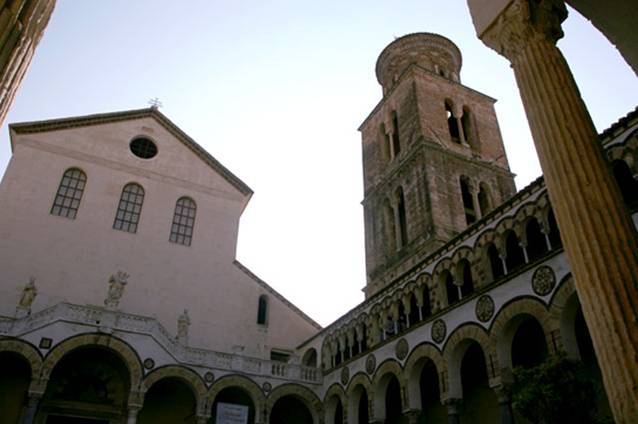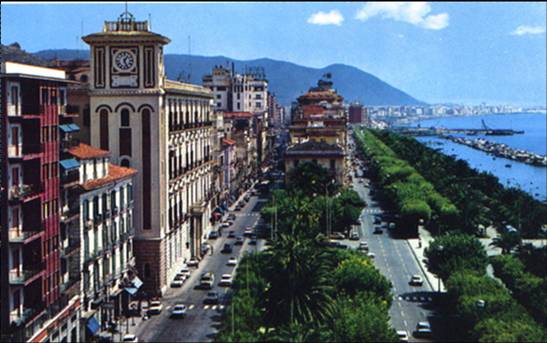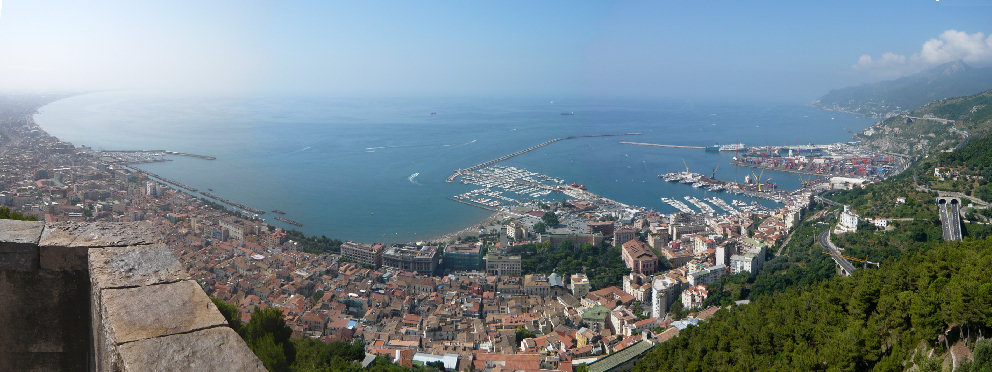|












|
|
|
Brief History
The area of
Salerno hosted a small Pre-Roman settlement, as witnessed by the
Etruscan necropolis in the quarter of Fratte. The Roman castrum Salerni was then founded in 197 BC. In the middle ages Salerno became the main
Longobard principality in the south of Italy. In this period the
Schola Medica Salernitana,
the oldest university in Europe, became the center of the whole European medical knowledge in the middle ages. With the arrival of the
Normans lead by
Robert Guiscard, Salerno was still the
major center of the southern Italy, even offering protection to the pope for a few years. However, the capital of the Norman reign uniting the whole southern Italy was later moved to Palermo, and with the emperor
Frederick II, Salerno definitely lost its capital role in favour of Naples.
In September 1943, during the World War II, Salerno was
the scene of the
Operation Avalanche and
suffered a great deal of damage. From February 12 to July 17, 1944, it
hosted the Government of Marshal Pietro Badoglio. In those months Salerno
was the temporary "Capital of the Kingdom of Italy", and the King Victor
Emmanuel III lived in a mansion in its outskirts. |
 |
 |
Salerno today
Salerno is a very lively town that has been rapidly renewing its look in the last few years. From west to east, we find the commercial port, the old town, and the modern center ending at the train station. Beyond the station, the town has considerably grown in size in the last fifty years, reaching 140,000 inhabitants. In the old town you should not miss the
Duomo, witnessing the glourious Norman age. You will certainly appreciate the shops of Via dei Mercanti in the old town and Corso Vittorio Emanuele in the modern center, stretching eastward to the train station. With fine weather, have a stroll on the beautiful Lungomare (seafront). In the evening you will find a lot of restaurants and pubs both in the old town and in the modern center. In particular, people use to cluster in Via Roma in front of the town hall. Finally, take the chance to visit the
Arechi Castle on the top of the hill dominating the old town, for an enchanting view of Salerno and its gulf. |
 |
Natural parks
Salerno is surrounded by two national parks: Vesuvio and Cilento; and two regional parks: Monti Lattari, Monti Picentini. The highest mountains, touching 1800 m, are covered by a dense forest very rich in waters. They offer beautiful views on Salerno gulf and the whole Campania region. Among the hundreds of trails in the region, the most famous is
Sentiero degli Dei ("Path of the Gods"), on the top of Amalfi coast. The dominant rock is limestone, which is ideal for climbing, especially in the Amalfi coast, where many climbing sites are equipped. Finally, the small ski resort of Lago Laceno is at one hour of drive from Salerno. For hiking maps and climbing guidebooks, you may contact
Valerio Bozza. For sailing in Salerno gulf and along the Amalfi coast, contact
Luigi Mancini. |
|
Climate in January
Average High Temperature: 13°C
Average Low Temperature: 6°C
Average month precipitations: 152mm
Average number of rainy days: 11 |
 |
|
|



